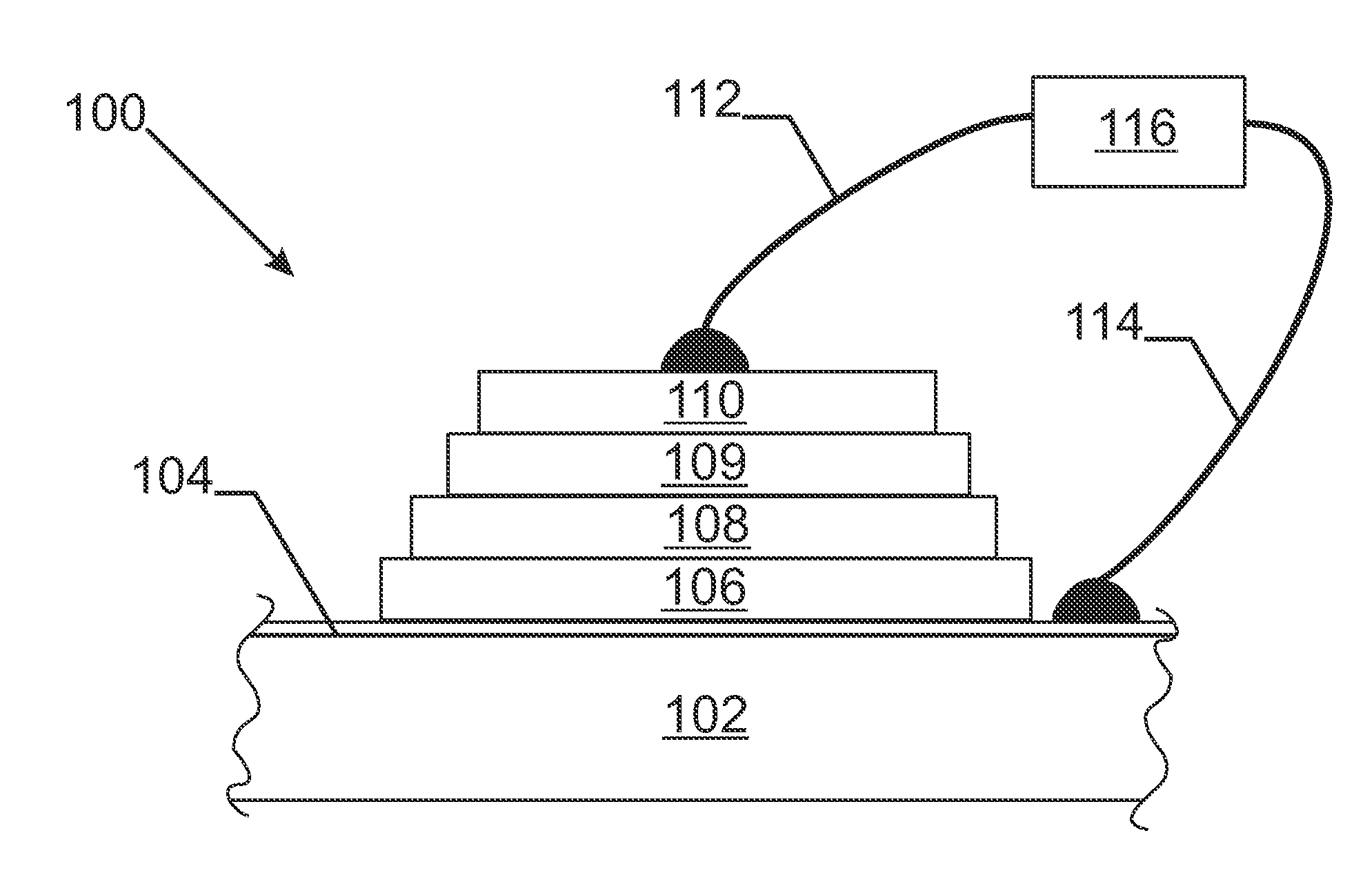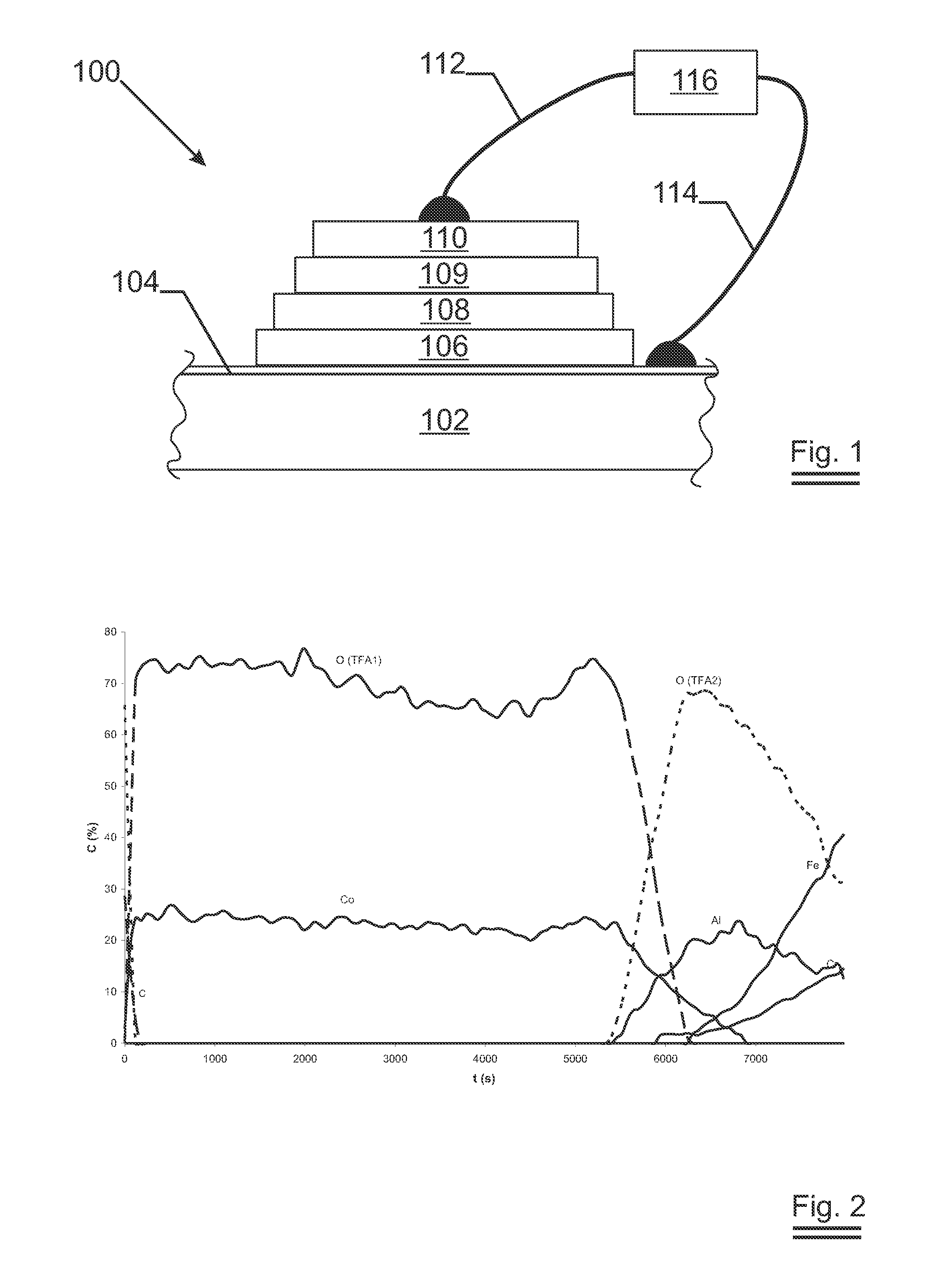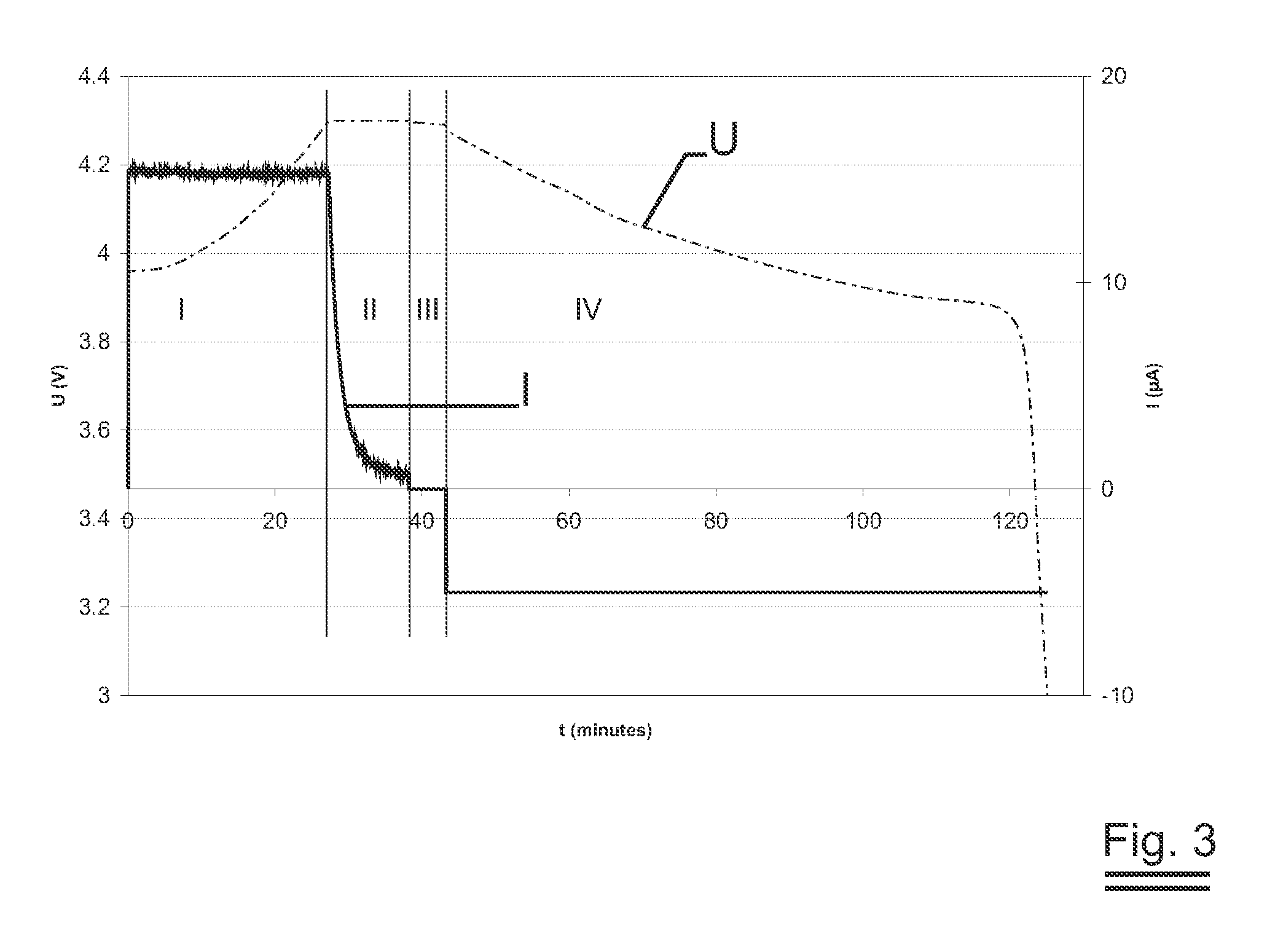Substrate for lithium thin film battery
a thin film battery and substrate technology, applied in the field of lithium ionswitching devices, can solve the problems of reducing the capacity of the battery, preventing the use of a metal foil as such for batteries, and unable to use high temperature resistant polymers such as polyimides, so as to improve the retention of lithium in the device, prevent the loss of lithium, and improve the adhesion of the first electrode
- Summary
- Abstract
- Description
- Claims
- Application Information
AI Technical Summary
Benefits of technology
Problems solved by technology
Method used
Image
Examples
Embodiment Construction
[0064]On a number of different metal alloy foils a first electrode material was deposited. The following compositions of alloys were selected (in % by weight of the total):
TABLE 1FoilMat. Nr.NiCrFeAlREPhADIN 1.47670.19*20.4*72.9*5.63*Y ≅ 0.06*FBDIN 1.476719-21Bal.5.5-6.0Zr > 0.03, Hf > 0.03, Y > 0.03FCDIN 1.476719-21Bal.5.0-6.00.15 > La > 0.01FDAISI 3016-9.5 16-19Bal.AEAISI 3017.5*16.5*Bal.AFAISI 3027.2*17.2*Bal.AGAISI 43016-18Bal.FHAISI 3048-10.518-20Bal.ADIN refers to the ‘Werkstoffnummer’,AISI refers to the ‘American Iron and Steel Institute’.RE are ‘reactive elements’.‘‘19-21’ means that the element concentration is between 19 and 21 percent by weight of the total,‘>0.10’ indicates the element is at least the percent in weight indicated.An asterisk ‘*’ indicates an actually measured value.‘Bal.’ indicates that - apart from the unintentional impurities - the remainder of the weight is made up by iron.The column ‘Ph.’ refers to the metallurgical phase the alloy is in: ‘F’ means ‘f...
PUM
 Login to View More
Login to View More Abstract
Description
Claims
Application Information
 Login to View More
Login to View More - R&D
- Intellectual Property
- Life Sciences
- Materials
- Tech Scout
- Unparalleled Data Quality
- Higher Quality Content
- 60% Fewer Hallucinations
Browse by: Latest US Patents, China's latest patents, Technical Efficacy Thesaurus, Application Domain, Technology Topic, Popular Technical Reports.
© 2025 PatSnap. All rights reserved.Legal|Privacy policy|Modern Slavery Act Transparency Statement|Sitemap|About US| Contact US: help@patsnap.com



